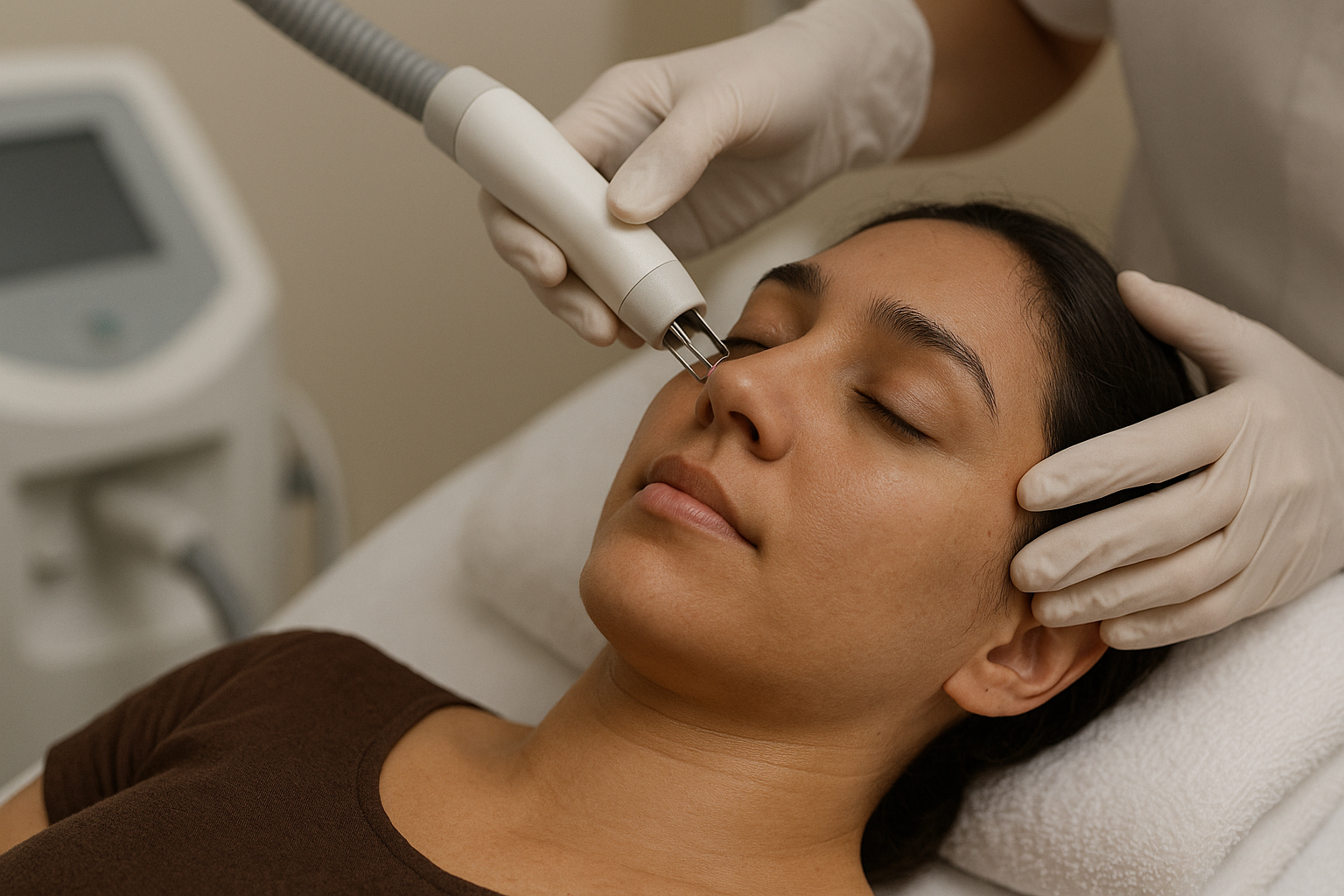Introduction:
- Androgenetic alopecia (AGA), or male or female pattern baldness, is a frequent, inherited type of hair loss involving progressive thinning and miniaturization of hair, usually beginning during or after puberty, and is associated with hormonal sensitivity and genetic susceptibility.
- The most prevalent reason for baldness in both male and female is androgenetic alopecia or hereditary pattern baldness, which is an inherited condition that is both hormone- and age-dependent.
- Male and female pattern hair loss, otherwise referred to as the androgenetic alopecia, are essentially fueled by the interaction of the genetic predisposition and susceptibility to androgens, with special emphasis on dihydrotestosterone (DTH).
Symptoms & Early Signs
- Thinning on the crown and receding hairline are typical indicators of male pattern baldness, a hormonal genetic disorder that impinges on the hair follicles.
- Widening of the part and diffuse thinning of hair on women are usual presentations of female patterns hair loss, also known as androgenetic alopecia, which is an irreversible, non-scarring condition.
- Hair follicle miniaturizing is a progressive process in which the hair follicles become smaller, resulting in thinner, shorter and weaker hair strands, usually related to the androgenetic alopecia.
Causes & Risk Factors
- Dihydrotestosterone DTH, a metabolite of testosterone, is an important cause of hair loss, especially of androgenetic alopecia, through shrinking of hair follicles and shortening of the hair growth phase.
- Family history of hair loss suggests there is a robust genetic susceptibility for hair loss in the form of androgenetic alopecia, the most frequent type of baldness. A condition also described as male pattern or female pattern baldness and is determined by genes from mother and father alike, with enhanced risk if other relatives on one’s side undergo hair loss.
- Poor diet, stress, not getting enough sleep, and harmful lifestyle habits such as smoking and excessive use of hair products weaken hair.
Diagnosis at Regencare
- A scalp scan and trichoscopy are non-surgical methods involving the use of a handheld or digital dermatoscope to view the hair and scalp. Facilitating hair and scalp disease diagnosis and monitoring.
- The hair pull test facilitates the evaluation of active hair loss, whereas miniaturization pattern check identifies changes in hair follicle size and thinning suggestive of conditions such as male or female pattern alopecia.
- Blood test can diagnose both nutritional deficiencies and hormonal imbalances by quantifying blood levels of vitamins, minerals, hormones, and other compounds to enable diagnosis and treatment.
Treatment Options for Androgenetic Alopecia
- PRP Therapy for Hair Loss
- Platelet-Ric Plasma PRP promotes hair regrowth by injecting a blood sample loaded with growth factors into the scalp, which in turn stimulates hair follicle cells, improves blood circulation, and encourages the natural cycle of hair growth.
- PRP therapy consists of taking blood, processing it to isolate platelets, and injecting the PRP into the damaged area to promote healing. Although the procedure is safe and effective.
- Before & after images of real patient results.

- Low-Level Laser Therapy (LLLT) & Microneedling
- Red light therapy is low-level laser therapy. It involves the use of light of a certain wavelength to stimulate your follicles, leading to cell growth and enhanced hair growth.
- Microneedling with growth factors is a hair restoration therapy which involves the utilization of small needles to make micro-injuries on the scalp, provoking the natural healing process of the body and potentially inducing hair growth, particularly if combined with the use of growth factor concentrates.
Preventive Measures & Home Care
- Forhealthy hair, emphasize a balanced diet with proteins, omega-3 fatty acids, iron and vitamins A, C, D, E and B complex, and minerals such as zinc and selenium.
- If hair is prone to becoming greasy, use sulfate-free shampoos and light volumizing conditioners. Select a shampoo according to your hair type.
- To foster healthy hair and general well-being, focus on stress management via practices such as exercise, meditation and controlled breathing, have a good amount of sleep and have good hair hygiene by applying gentle products and staying away from rough treatments.
When to see a Dermatologist at Regencare?
Early treatment for androgenetic alopecia, or male/female pattern hair loss, with drugs and medications, may enhance results by potentially halting further hair loss and stimulating hair growth, particularly if initiated prior to extensive hair loss.
Book a Consultation Today!
To obtain customized treatment plans form hair professional, you may look for options such as personalized hair formulation services, comprehensive hair analysis with Regencare and consult Dr. Ashwathi Mohan. Restore your hair with customized hair restoration services. Gain confidence & get natural looking results. Schedule a free consultation today at Regencare.



